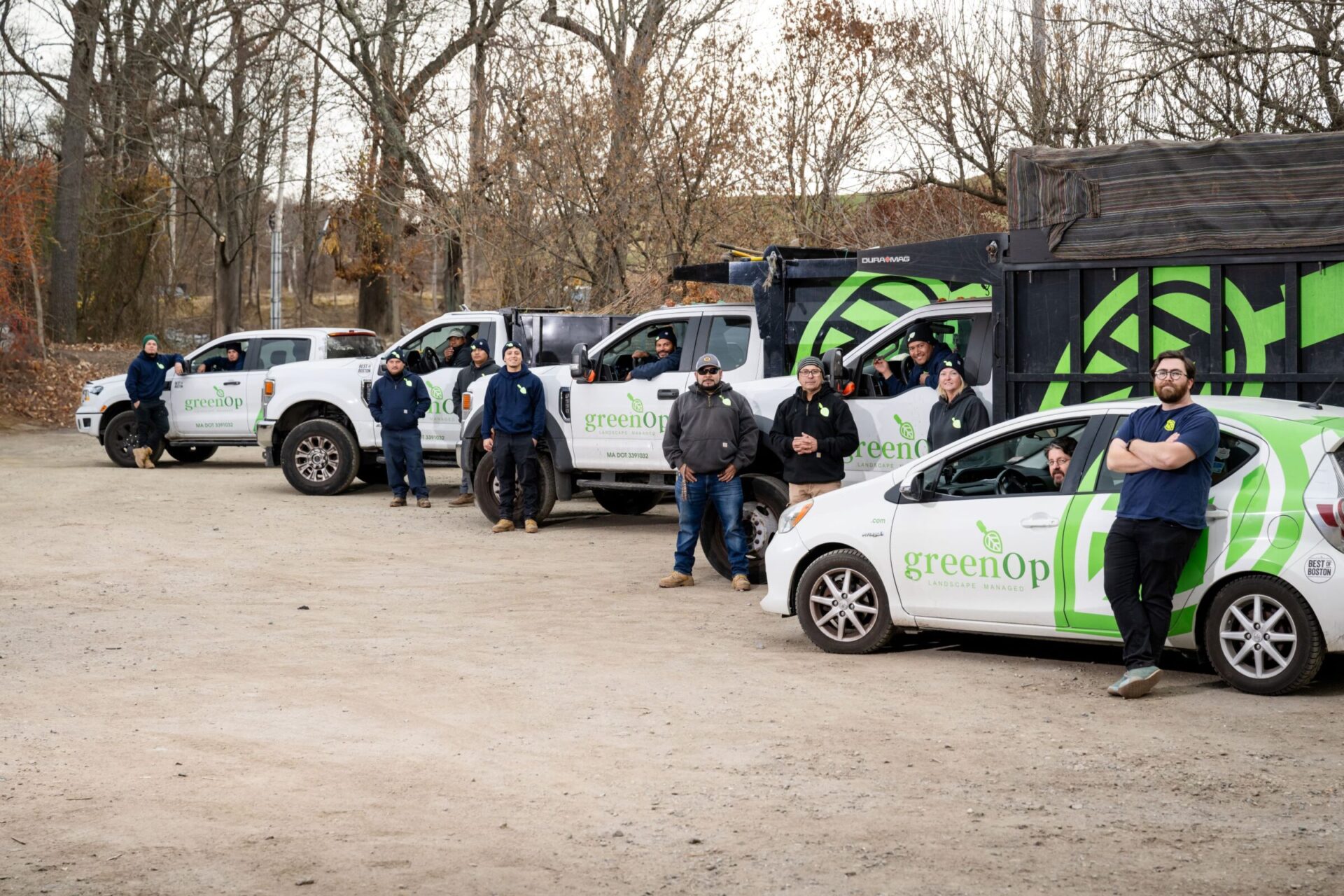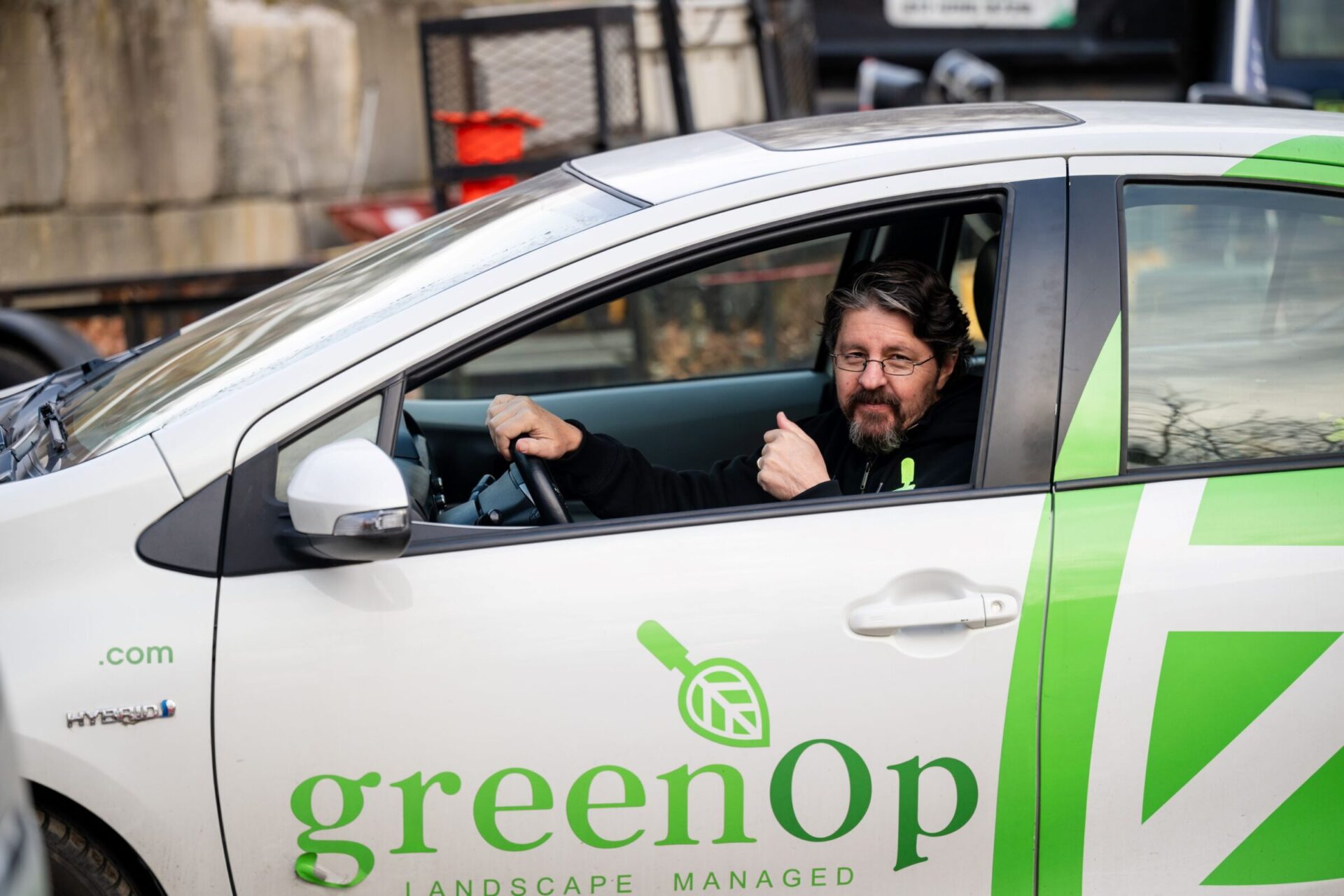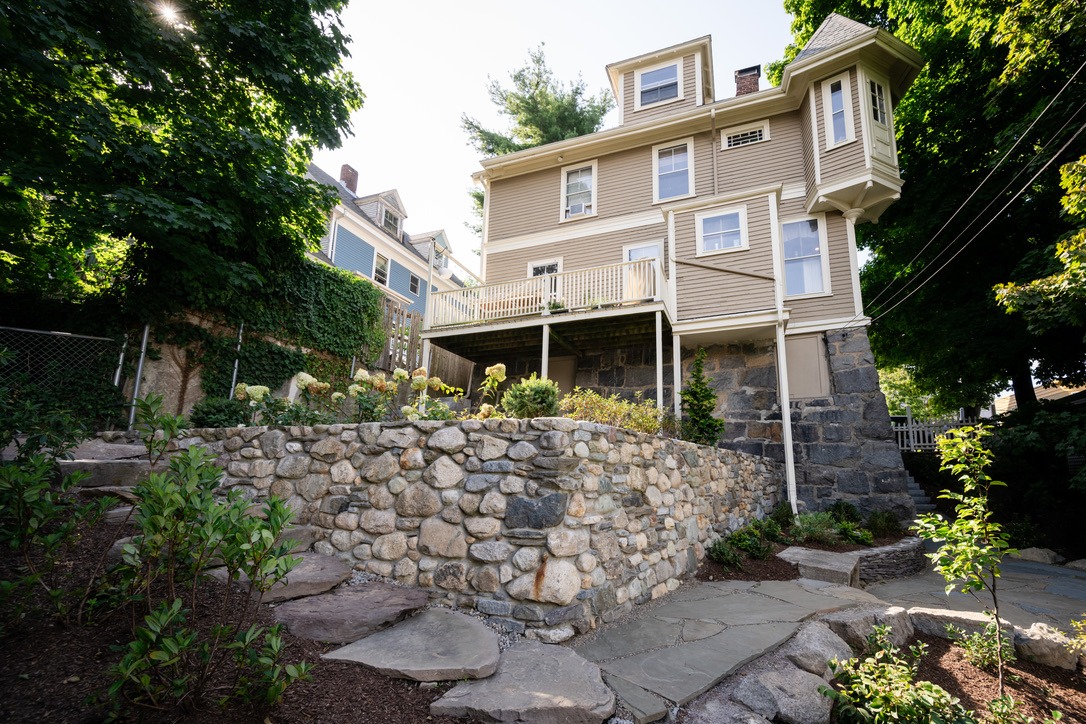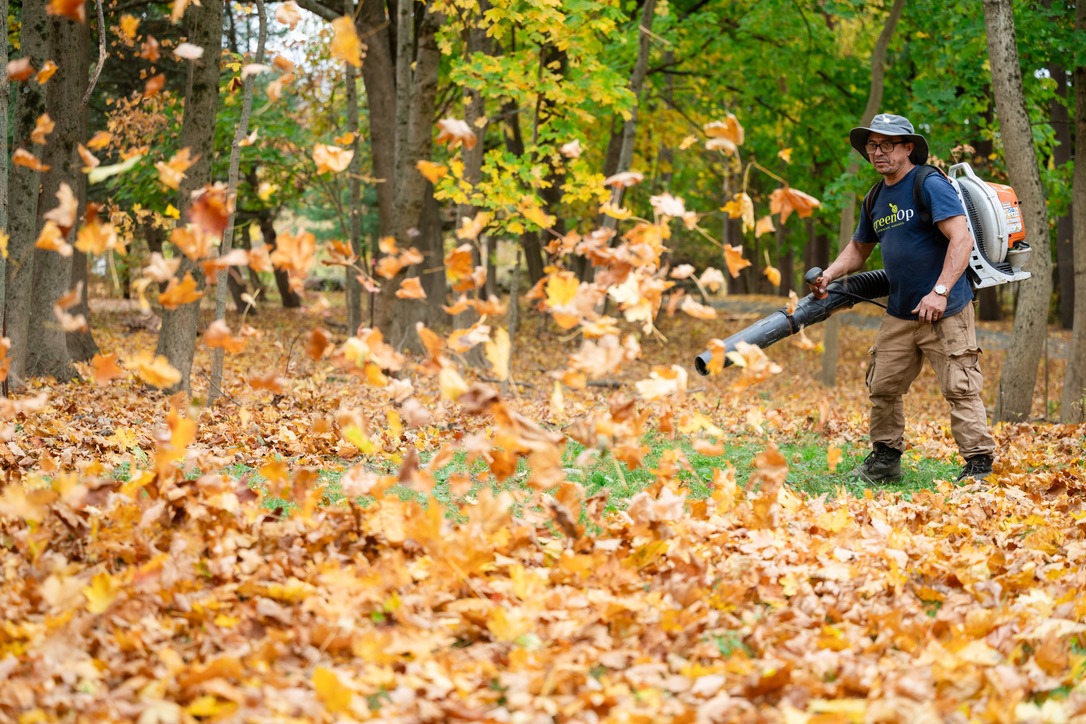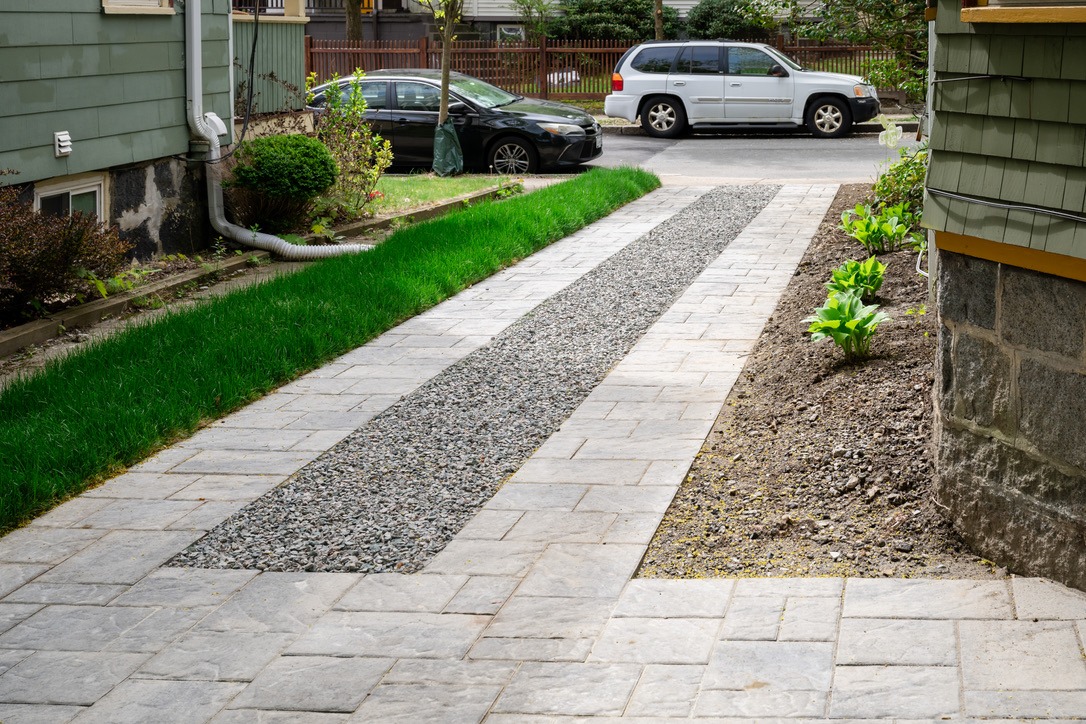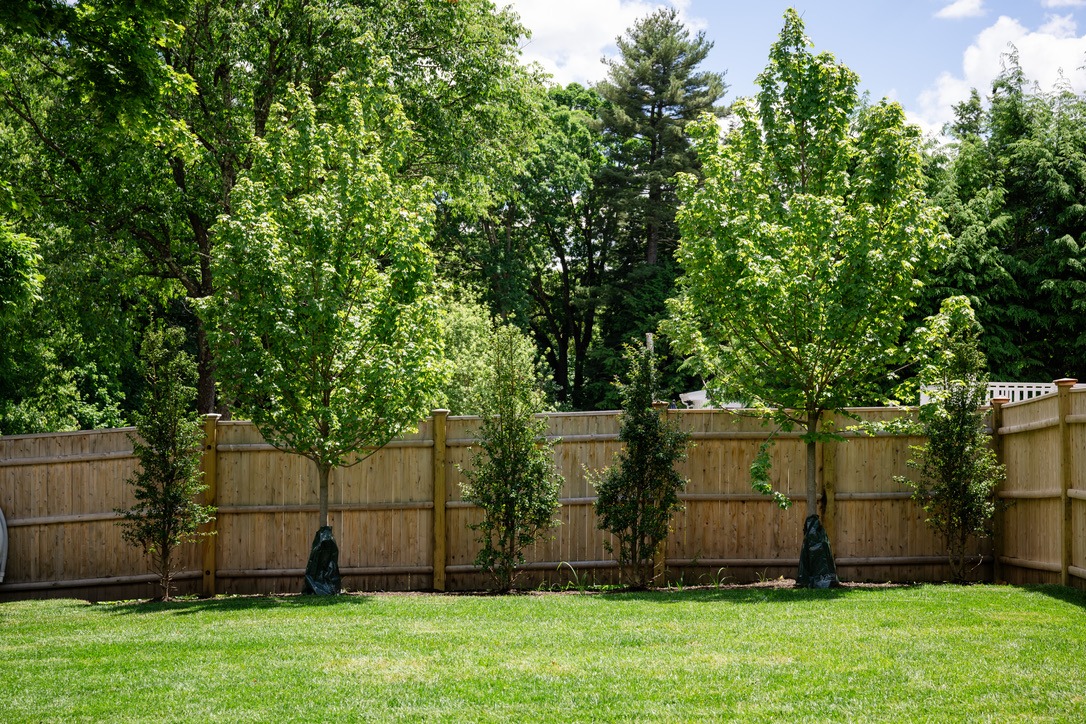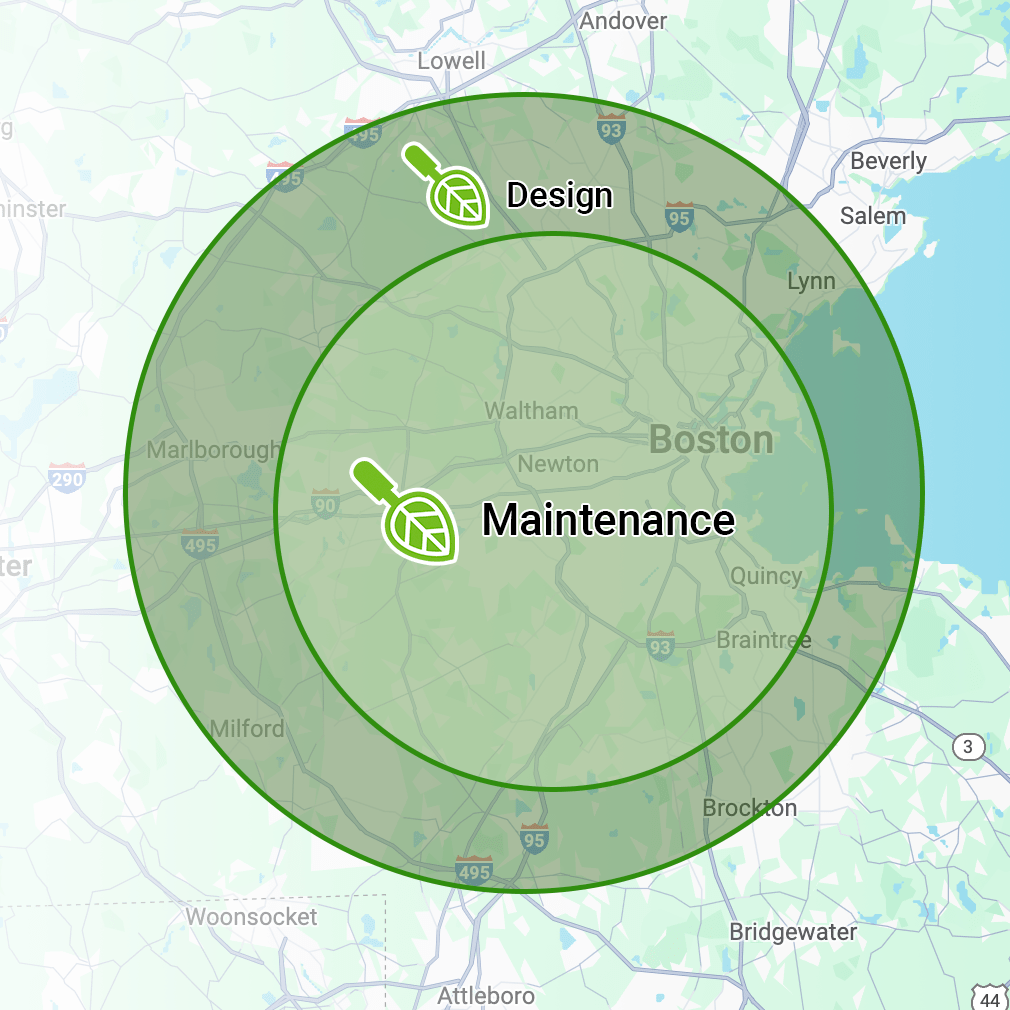Trends and Innovations in Landscaping in Wellesley, MA
As we venture into the future, several emerging trends are set to redefine the landscape of urban gardening. 2025 will witness an exciting blend of technology and tradition that will reshape the way we approach landscaping design.
In 2025, texture is projected to dominate urban landscape design. Gardeners and landscape architects are moving away from traditional flower-focused designs. Instead, they’re using a variety of leaves with different shapes, colors, sizes, and textures to create visually appealing landscapes. This trend not only adds depth and interest but also encourages biodiversity by attracting various insects and birds.
The trend of outdoor living spaces grows stronger each year as homeowners seek to make the most of their exterior spaces. In 2025, expect to see more functional gardens with outdoor kitchens, dining areas, fire pits or lounges being integrated into landscape designs for year-round enjoyment.
Sustainability continues to be a strong influence in urban gardening trends. A greater focus is being placed on native plants that suit local climates and require less water and maintenance. Additionally, eco-friendly practices such as composting are becoming more common as people strive for zero-waste gardening.
Technology has its place in the garden too! Following the smart home trend, smart irrigation systems are expected to become increasingly prevalent in urban gardens by 2025. These systems use real-time weather data to adjust watering schedules accordingly – ensuring efficient water usage while maintaining healthy plants.
As more people become conscious about their food sources, edible landscaping is expected to grow in popularity in urban areas by 2025. Planting fruits, vegetables or herbs not only offers fresh produce but also adds color and variety to urban landscapes.
| Trend |
Description |
| Texture Focused Designs |
Using a variety of leaves to create depth and interest |
| Outdoor Living Spaces |
Gardens with spaces for outdoor cooking, dining or lounging |
| Eco-Friendly Landscaping |
Use of native plants and eco-friendly gardening practices |
| Smart Irrigation Systems |
Technology that adjusts watering schedules based on real-time weather data |
| Edible Landscaping |
Planting fruits, vegetables and herbs as part of landscaping design |
These anticipated trends in urban landscaping for 2025 show a promising evolution towards more sustainable, functional, and technologically-advanced gardening practices. They reflect our changing perspectives towards our outdoor spaces – seeing them not just as decorative elements but as integral parts of our daily lives.
Landscaping Services in Wellesley, MA: Innovative Solutions for Modern Needs
In recent years, the landscaping industry has witnessed a surge in the development of innovative smart gardening tools and applications. These technologies present an array of opportunities for enhancing the efficiency and aesthetics of modern landscapes. With a simple tap on their smartphone, gardeners can now access relevant gardening information, monitor their plants’ health, automate watering schedules, and even order plants or gardening supplies.
Smart Irrigation Systems
One of the most popular smart gardening tools is the smart irrigation system. This technology allows homeowners to control their sprinkler systems remotely using a smartphone application. The system takes into account local weather forecasts and adjusts watering schedules accordingly to prevent overwatering or underwatering. Some advanced systems are equipped with soil moisture sensors that provide real-time feedback on soil conditions.
Plant Identification Apps
Plant identification applications are another innovation revolutionizing modern landscaping practices. These apps allow users to identify unknown plants by simply taking a picture with their smartphones. They provide crucial information about plant species, care instructions, common pests and diseases associated with each plant species.
Garden Planning Software
Garden planning software has become an invaluable tool for both novice gardeners and professional landscapers. These programs enable users to experiment with different plant arrangements and designs before implementing them in real life. They often include databases of different plant species with details about their growth habits, ideal soil conditions, sunlight requirements among other essential details.
Robotic Lawn Mowers
Robotic lawn mowers are becoming increasingly common in residential landscapes. These devices can be programmed to mow lawns at specified intervals without human intervention. They feature sensors that enable them to navigate around obstacles and avoid mowing over flower beds or any other restricted areas.
Drones in Landscaping
Drones are being used for various landscaping purposes including lawn maintenance, land surveying, pest management amongst others. Equipped with high-resolution cameras, drones can capture detailed aerial views of landscapes, making it easier to detect issues like disease outbreaks or pest infestations.
Soil Testing Kits
Soil testing kits have been around for quite some time, but recent advancements have made the process quicker and more accurate. These kits can test a wide range of soil properties including pH levels, nutrient content and soil texture. With this information in hand, gardeners can make informed decisions on what type of plants to grow and how to properly care for them.
Smart gardening tools and applications play a crucial role in modern landscaping. They simplify tasks, reduce manual labor, enhance efficiency and help gardeners make more informed decisions about their outdoor spaces. As technology continues to advance, it’s no doubt that we will see even more tools designed to make gardening easier and more enjoyable.
Exploring the Landscape in Wellesley, MA
With the increasing threats posed by climate change, the significance of climate-resilient practices in contemporary gardening cannot be overlooked. These practices ensure that gardens can withstand varying weather patterns and contribute to the overall health of our environment. This includes both small scale private gardens and large scale public parks or green spaces.
Plant Selection
Choosing the right plants is one of the most critical aspects of creating a climate-resilient garden. Gardeners should opt for native species, which have naturally adapted to local weather patterns and soil types over time. They are more resistant to local pests, diseases, and erratic changes in climate.
- Identify native plants in your region.
- Select diverse plant species to accommodate various weather conditions.
- Choose drought-tolerant plants if your area experiences long dry spells.
- Opt for plants that can survive flooding if your region is prone to heavy rainfall.
Sustainable Water Management
Water management is another essential aspect of climate-resilient gardening. Proper water management strategies not only ensure optimal growth but also conserve water resources.
- Rainwater harvesting: This involves collecting rainwater from rooftops and storing it for later use in watering plants.
- Drip irrigation: This watering technique limits evaporation by delivering water directly to plant roots.
- Mulching: Applying mulch helps retain soil moisture and reduce evaporation.
Soil Health Improvement
Healthy soils are crucial for a resilient garden as they can better retain water, resist erosion, and support diverse plant life.
- Organic matter addition: Compost, manure, and other organic materials can enhance soil fertility.
- Crop rotation: This practice helps prevent soil degradation and maintain nutrient levels.
- Reduced tillage: Limiting soil disturbance can help maintain its structure and prevent erosion.
Pest Management
Integrated pest management (IPM) is a sustainable approach to managing pests by combining biological, cultural, physical, and chemical tools in a way that minimizes economic, health, and environmental risks.
- Biological control: Using natural enemies of pests to reduce their populations.
- Crop diversity: Planting a variety of crops can deter pests.
- Regular monitoring: Frequent checking helps detect any early signs of pest infestations.
Climate-resilient practices in gardening are becoming increasingly important with the current state of our global climate. By adopting such practices, gardeners can ensure the longevity of their gardens while also playing a part in conserving our environment.
Exploring the Work of Landscapers in Wellesley, MA
Urban gardening is rapidly morphing into an essential aspect of city living, with urban farms and rooftop gardens becoming increasingly popular. This shift towards green city living has seen a rise in innovative gardening techniques, specifically the development and adoption of vertical farming.
Vertical farming is an innovative method of cultivating plant life within vertically inclined surfaces. Instead of traditional farming in a field or a greenhouse, vertical farming takes advantage of limited space by growing plants and crops vertically, offering a sustainable solution for urban agriculture.
Exploring Landscape Design in Wellesley, MA
A significant benefit of vertical farming is its sustainability. These farms require less water and land compared to traditional farms due to the use of hydroponics – the science of growing plants without soil. Hydroponic systems use nutrient-rich solutions that circulate around the roots of plants, ensuring they receive all necessary nutrients while using 70-95% less water than soil-based agriculture.
- Reduced Use of Land: With cities becoming increasingly populated, land availability becomes scarce. Vertical farms provide an effective solution by multiplying the surface area that can be used for planting.
- Climate Control: Vertical farms are often housed indoors or in specially designed structures, allowing for climate control regardless of external conditions.
- Year-Round Crop Production: As vertical farms are not reliant on natural weather conditions or seasons, they can produce crops all year round.
Understanding the Importance of Lawn Care in Wellesley, MA
Vertical farming also has an economic impact. The local production reduces transportation costs and eliminates the need for imported goods, enhancing food security within communities. Vertical farms have also been shown to generate jobs within urban areas where employment opportunities may be limited.
The Expertise of Gardeners in Wellesley, MA
- High Initial Costs: Setting up a vertical farm requires significant initial investment in infrastructure, technology, and training.
- Energy Consumption: While vertical farming conserves water, it can be energy-intensive due to the use of artificial lighting and climate control systems.
Exploring Landscaping Companies Near Me: A Comprehensive Guide
A prime example of successful vertical farming is AeroFarms, a New Jersey-based company that operates the world’s largest indoor vertical farm. AeroFarms uses aeroponics, a process where plants are grown in mist environments without soil or an aggregate medium. They report using 95% less water than traditional farms and avoiding the use of harmful pesticides or herbicides.
Future Trends in Landscaping Companies in Wellesley, MA
Looking towards the future, we can expect further advancements in vertical farming technology. With continuous improvements in LED lighting efficiency and solar power adoption, energy consumption concerns could lessen. Furthermore, as urban populations continue to grow and sustainability becomes even more critical, vertical farming will undoubtedly continue its ascent as a key player within urban agriculture.
Landscape Contractor in Wellesley, MA: Enhancing Biodiversity Through Focused Designs
Biodiversity is the variety of different types of life found on earth and it plays a crucial role in the functionality of an ecosystem. In the field of landscaping, focused design strategies can significantly contribute to enhancing biodiversity. This not only enhances the aesthetic value of landscapes but also contributes towards a healthy and sustainable environment.
Incorporating Native Plants
One of the most effective ways to enhance biodiversity in landscaping is by incorporating native plants. These plants have evolved over thousands of years in a specific region and are adapted to local soil, climate, and wildlife conditions. Native plants attract a variety of birds, insects, and other wildlife by providing food sources and habitat.
- Sustain Local Wildlife: Native plants can support more wildlife than non-native ones because they provide native fauna with familiar habitats.
- Low Maintenance: Since these plants are adapted to local conditions, they require less maintenance compared to exotic species.
Designing Habitat Gardens
Habitat gardens are designed with the specific needs of certain wildlife species in mind. These gardens can enhance biodiversity by providing shelter, food, and breeding spaces for various species.
- Bird Gardens: These can include bird feeders, nesting boxes and a mix of plant species for habitat.
- Butterfly Gardens: Incorporating nectar-rich flowers can attract different butterfly species.
Use of Water Features
Water features like ponds or fountains not only add aesthetic value but also attract different forms of life such as birds, amphibians, insects, etc.
- Ponds: They can house fish and amphibians while also providing water for birds.
- Fountains: The sound of running water is appealing to many bird species.
Implementing Green Roofs & Walls
Green roofs & walls are another innovative way to enhance biodiversity. They provide additional habitat space for various forms of life.
- Green Roofs: They can be home to various insect species and can also attract birds.
- Green Walls: Similar to green roofs, they can serve as a habitat for insects and small birds.
Incorporating Organic Practices
Lastly, incorporating organic gardening practices can boost soil health, encourage beneficial insects, and ultimately enhance biodiversity.
- Composting: It enriches the soil and reduces the need for synthetic fertilizers.
- Natural Pest Control: Encourages beneficial insects that control harmful pests.
By focusing on these design strategies in landscaping, we not only create beautiful outdoor spaces but also contribute towards a healthy and sustainable environment. The enhancement of biodiversity should be a critical consideration in all landscaping projects as it leads to improved ecosystem productivity where each species, no matter how small, all have an important role to play.



